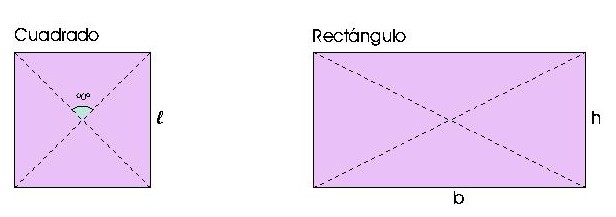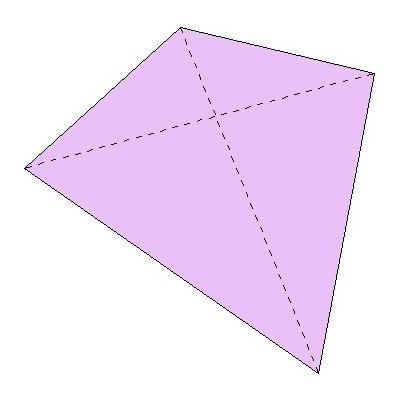QUADRILATERALS
It is difficult to classify quadrilaterals, so as an introduction to this subject, I quote the definition of quadrilaterals which makes Euclid in his book “The Elements”
“Of quadrilateral figures, a square is that which is both equilateral and right-angled; an oblong that which is right-angled but not equilateral; a rhombus that which is equilateral but not right-angled; and a rhomboid that which has its opposite sides and angles equal to one another but is neither equilateral nor right-angled. And let quadrilaterals other than these be called trapezia.”
Quadrilateral just means “four sides”. Any four-sided shape is a quadrilateral, but the sides have to be straight, and it has to be 2-dimensional. A quadrilateral is polygon with four corners or verticesand four sides or edges which are line segments. Quadrilaterals can have different shapes, but all of them have four vertices and two diagonals and the sum of all the internal angles is 360º in the simple ones.
There are simple and complex quadrilaterals, we will only study the simple ones. They still have 4 sides, but two sides cross over.

Types of quadrilaterals
Quadrilaterals are divided into convex and concave.
- A quadrilateral is convex, when none of its internal angles is bigger than 180º.
- A quadrilateral is concave, when one of its internal angles is bigger than 180º.
Convex quadrilaterals
A. Parallelograms
A Parallelogram has opposite sides parallel and equal in length. Also opposite angles are equal. Parallelograms are divided into:
A Parallelogram has opposite sides parallel and equal in length. Also opposite angles are equal. Parallelograms are divided into:
- Right: All their internal angles are equal to 90º.

- Square: All its sides are equal.

- Rectangle: Its sides are equal two by two.

- Other: Their internal angles are equal two by two, opposite internal angles are equal, two internal angles are obtuse and two internal angles are acute.

- Rhombus: All its sides are equal.

- Rhomboid: Its sides are equal two by two.

Trapezoid
|
Trapezium
| |
US
|
a pair of parallel sides
|
NO parallel sides
|
UK
|
NO parallel sides
|
a pair of parallel sides
|
B. Trapeziums (UK) / Trapezoids (US)
A Trapezium is a quadrilateral with two parallel sides and the other sides are not parallel to each other. The distance between parallel sides is called height.

Trapeziums are divided into:

A Trapezium is a quadrilateral with two parallel sides and the other sides are not parallel to each other. The distance between parallel sides is called height.

Trapeziums are divided into:

- Rights: One of its parallel sides is perpendicular to the parallel sides.
- Isosceles: Non parallel sides are equal.
- Scalenes: Non parallel sides are different.
C. Trapezoids (UK) / Trapeziums (US)
A Trapezoid is a quadrilateral with no parallel sides.

Link to this app to practise quadrilaterals properties.

No hay comentarios:
Publicar un comentario